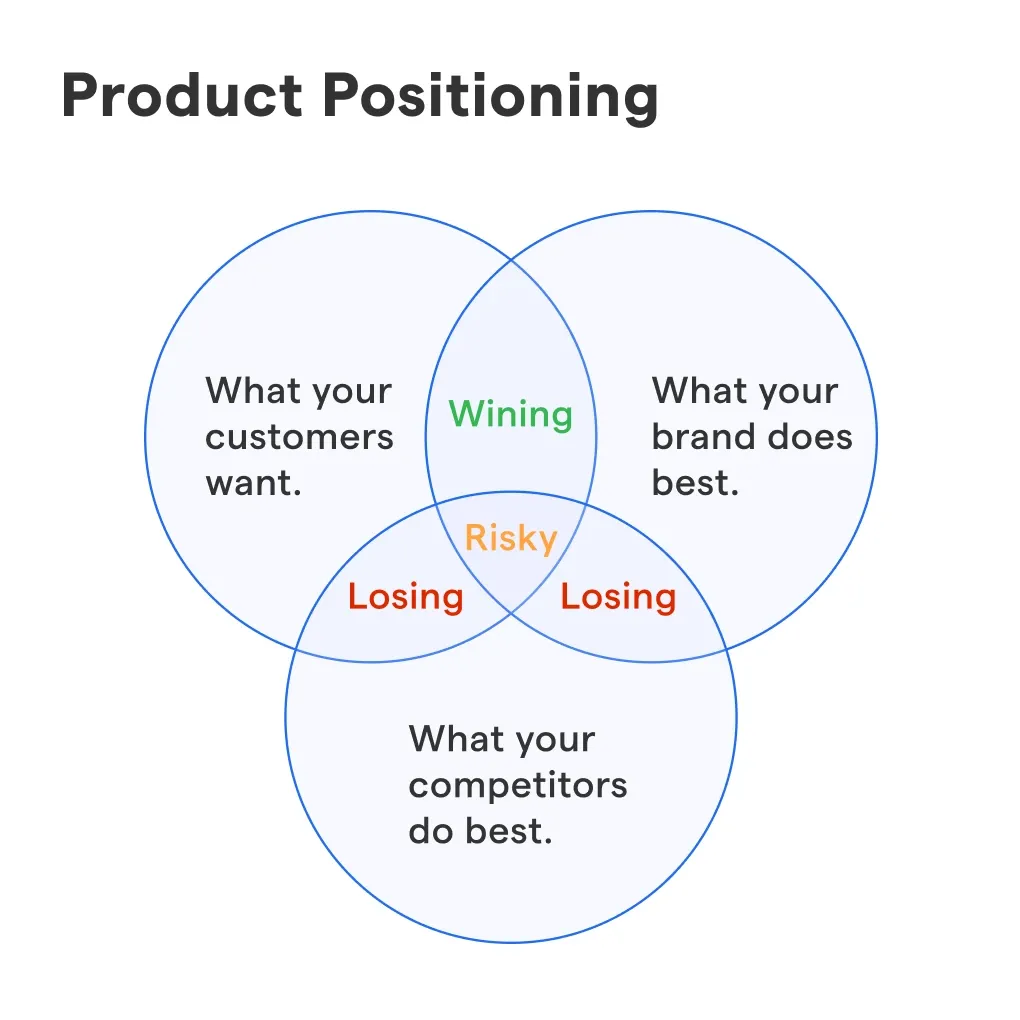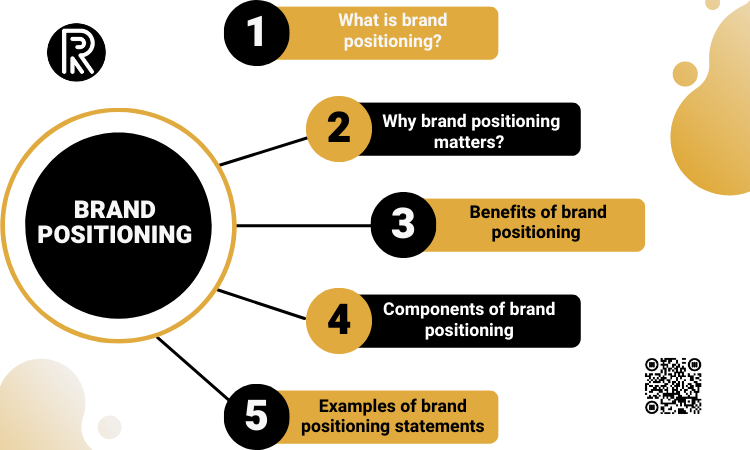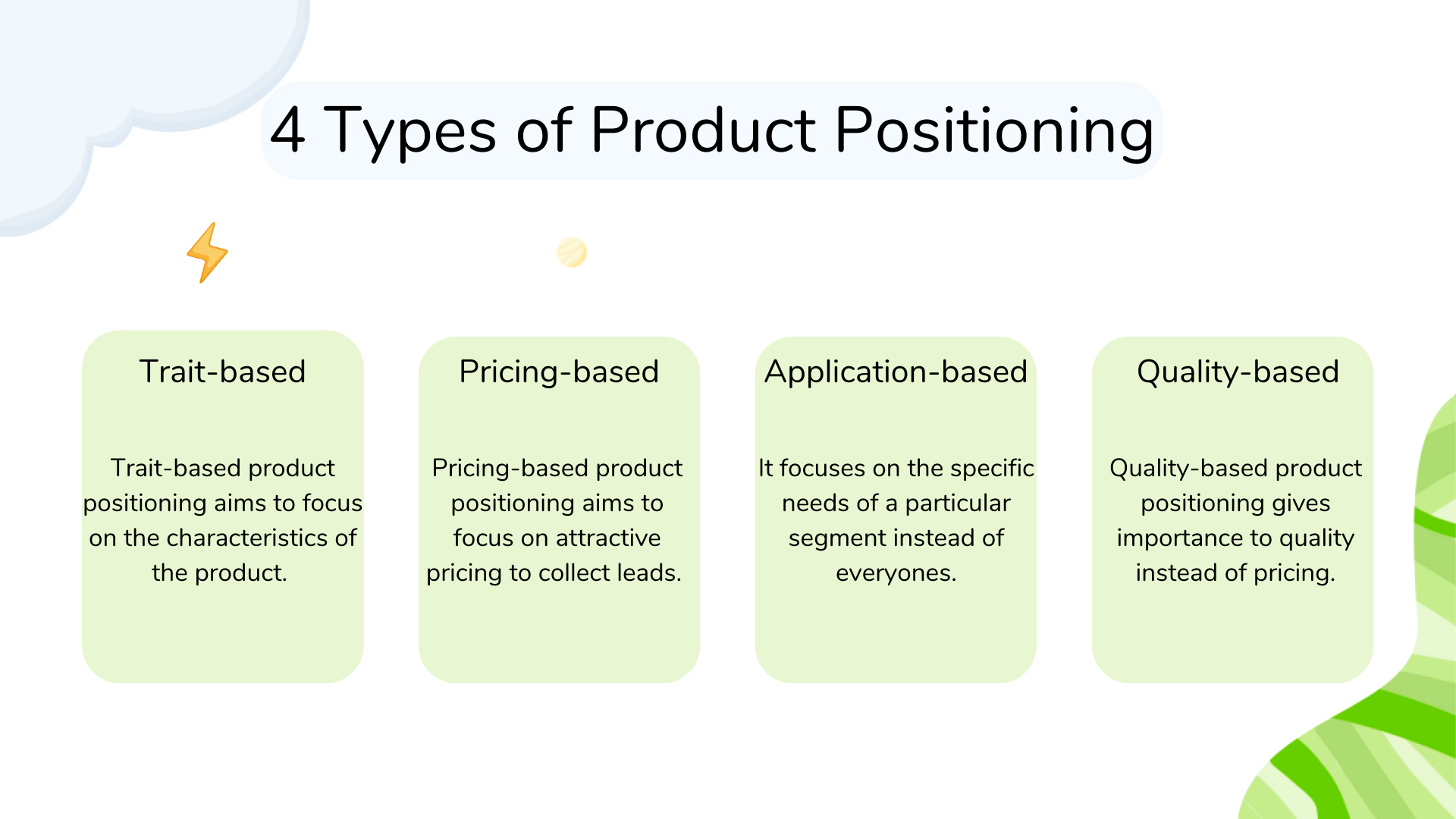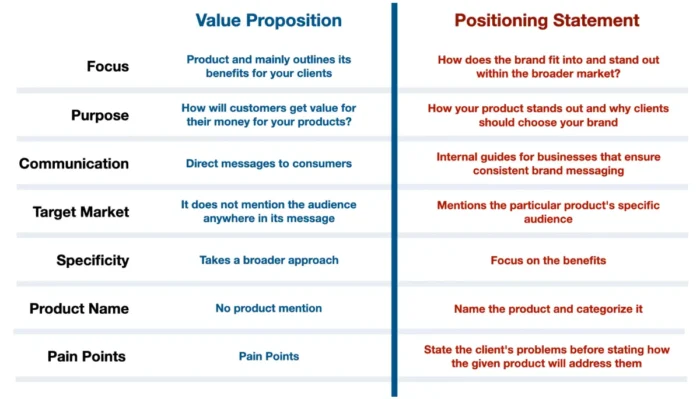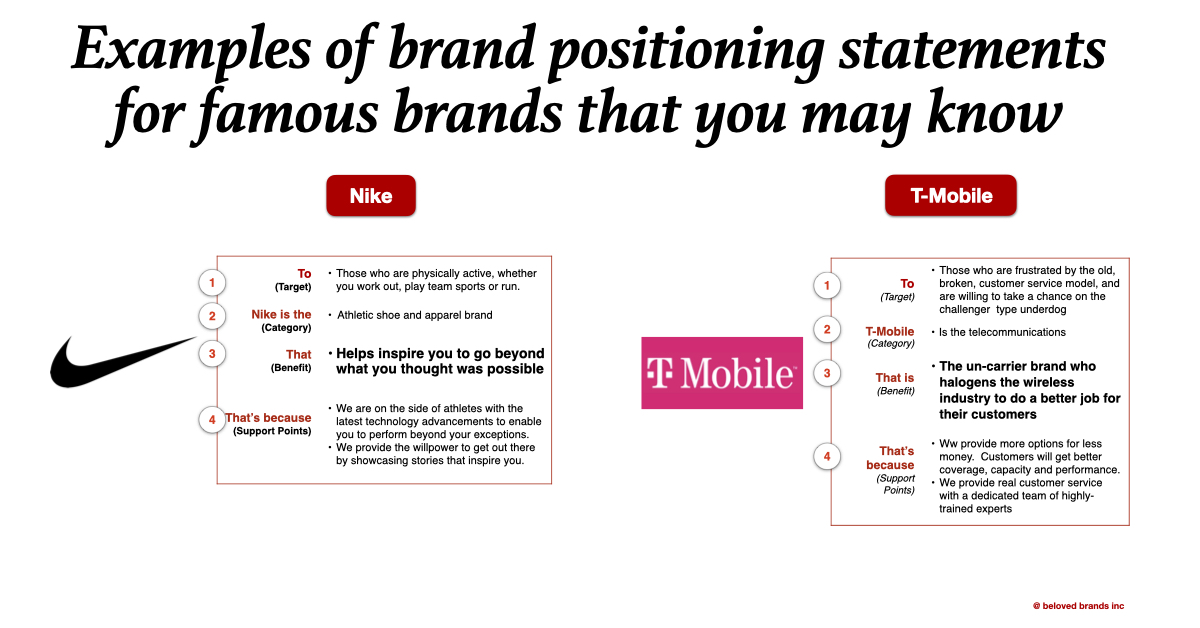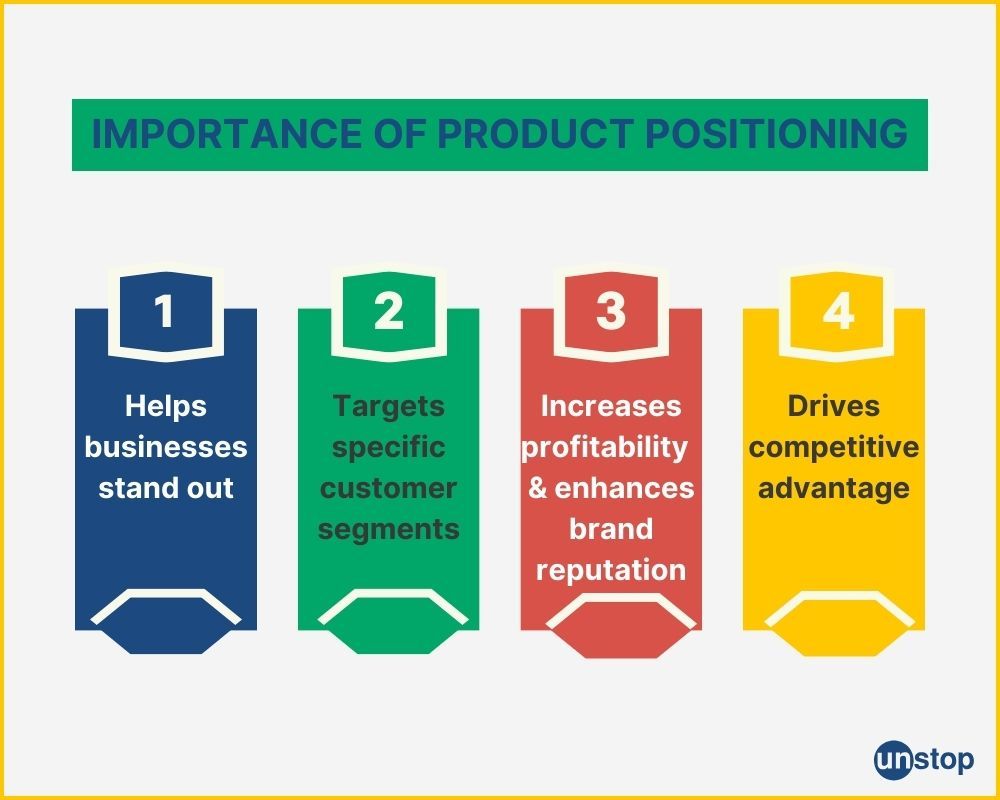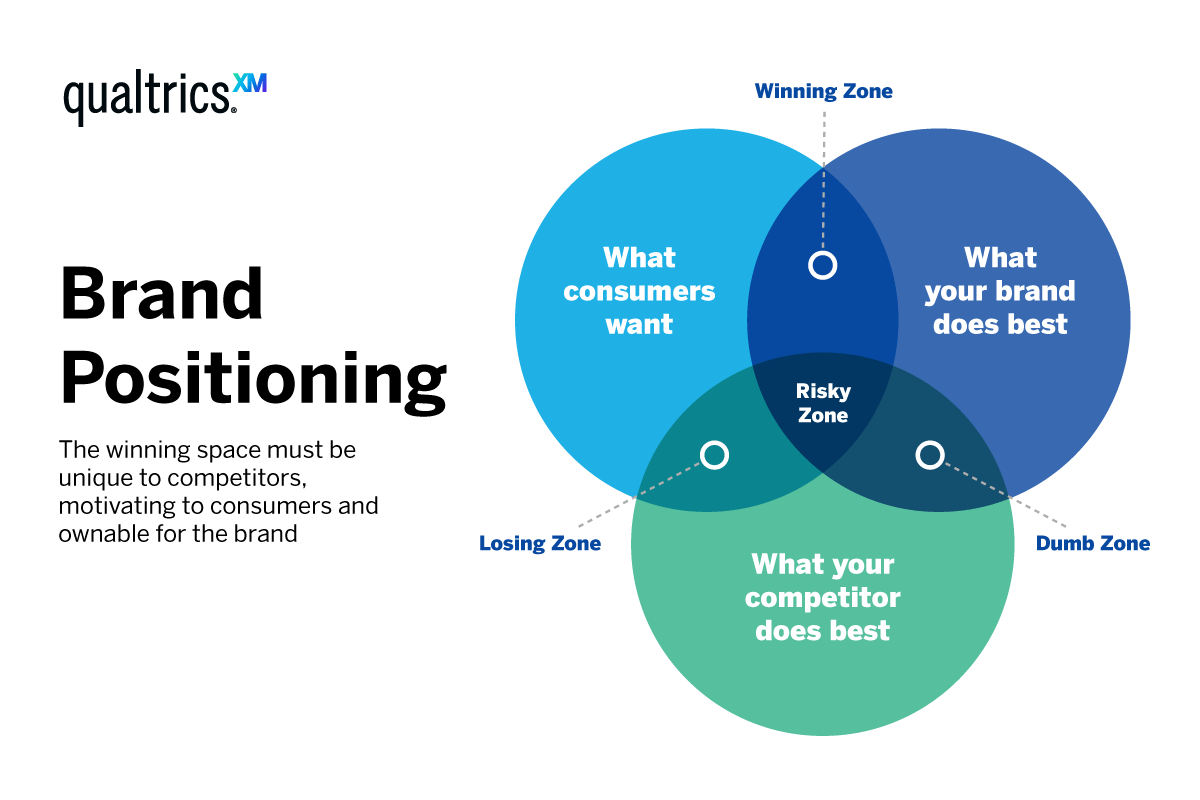Which Two Statements Are True Of Product Positioning

Imagine strolling through a bustling marketplace. Each vendor vies for your attention, their voices blending into a symphony of enticement. A baker boasts of his freshly baked bread, its aroma drawing you closer. A jeweler displays shimmering gems, each piece whispering tales of elegance. What makes you choose one over another? It's not just the product itself, but how it's presented, how it resonates with your needs and desires. This, in essence, is the magic of product positioning.
At its heart, product positioning is about crafting a unique and compelling identity for your offering in the minds of your target audience. It's about carving out a distinct space in their perception, ensuring they see your product as the ideal solution to their specific problem. Among the many truths surrounding product positioning, two stand out as particularly critical: it is about creating a clear and differentiated image in the customer's mind, and it is relative to competitors. This article will explore these truths, unveiling their significance and illustrating their impact on successful branding.
Understanding Product Positioning
Product positioning isn't merely about what you do, but how you're perceived. It's about the story you tell, the promise you make, and the feeling you evoke in your customers. It’s crafting an image that resonates with their needs and aspirations, leading them to choose you over the myriad alternatives.
The concept of product positioning was popularized by Al Ries and Jack Trout in their groundbreaking book, "Positioning: The Battle for Your Mind." They argued that in an era of information overload, the most effective way to succeed is to simplify the message and create a strong, easily recognizable position in the customer's mind. This idea revolutionized marketing and advertising, forever changing how companies approach branding and communication.
Truth #1: Creating a Clear and Differentiated Image
One of the most fundamental truths of product positioning is that it’s about creating a clear and differentiated image in the customer's mind. This means ensuring that your target audience understands what your product is, what it does, and why it's better than the alternatives.
Differentiation is key. Without a unique selling proposition (USP), your product risks blending into the sea of sameness. Consider Volvo, a brand synonymous with safety. Or Apple, associated with innovation and user-friendly design. These companies have successfully carved out distinct positions by focusing on specific attributes and consistently delivering on their promises.
Achieving this clarity requires understanding your target audience intimately. What are their needs? What are their pain points? What are their aspirations? By answering these questions, you can tailor your messaging to resonate with them on a deeper level.
Truth #2: Relativity to Competitors
Product positioning doesn't exist in a vacuum. It's inherently relative to your competitors. Your position is defined not just by what you are, but by how you're perceived in comparison to others.
To effectively position your product, you need to understand the competitive landscape. Who are your main competitors? What are their strengths and weaknesses? How are they perceived by customers? This analysis allows you to identify opportunities to differentiate yourself and claim a unique space in the market.
Sometimes, positioning involves directly comparing yourself to a competitor. This is known as comparative advertising and can be effective if done carefully. However, it's crucial to avoid making false or misleading claims, which can damage your brand's credibility. Consider Pepsi's taste tests against Coca-Cola. While controversial, they highlighted Pepsi's perceived taste superiority, aiming to shift consumer preferences.
Examples in Action
Let's look at some real-world examples to illustrate the power of effective product positioning. Dove, for instance, has successfully positioned itself as a champion of real beauty. Their campaigns feature diverse women of all shapes and sizes, challenging conventional beauty standards and resonating with consumers who feel excluded by traditional advertising.
Another example is Tesla. They've positioned themselves not just as an electric car manufacturer, but as a technology innovator. Their vehicles are known for their cutting-edge features, long range, and sleek design, appealing to environmentally conscious consumers who also value performance and luxury.
Finally, consider Starbucks. They haven't just sold coffee. They have crafted an experience: a "third place" between home and work, a haven for connection and community. Their product positioning focuses on the ambiance, the service, and the consistent quality, creating a premium experience that justifies their higher prices.
The Pitfalls of Poor Positioning
Failing to effectively position your product can have dire consequences. If your target audience doesn't understand what you offer or why it's better than the competition, they're unlikely to choose you.
Poor positioning can lead to confused messaging, diluted brand identity, and ultimately, lost sales. It's like trying to navigate a crowded marketplace without a clear destination, you're bound to get lost in the noise.
Furthermore, a poorly defined position can make it difficult to attract and retain loyal customers. If you're constantly changing your message or trying to be everything to everyone, you risk alienating your core audience and losing credibility.
Strategies for Effective Positioning
There are several strategies you can employ to effectively position your product. The most important is to start with a deep understanding of your target audience and the competitive landscape. From there, you can identify opportunities to differentiate yourself and craft a compelling message.
Focus on a specific benefit or attribute that resonates with your target audience. This could be a unique feature, a superior level of service, or a commitment to a particular cause. Ensure that your messaging is consistent across all channels, from your website to your advertising campaigns.
Regularly monitor and evaluate your positioning strategy. The market is constantly evolving, so it's essential to stay informed about changes in consumer preferences and competitive activity. Be prepared to adjust your positioning as needed to maintain your competitive edge.
Conclusion
In the vibrant marketplace of ideas and products, product positioning is the art of creating a lasting impression. It's about telling a story that resonates, building a brand that connects, and carving out a unique space in the minds of your customers.
Remember, it is about creating a clear and differentiated image and about being relative to competitors. Embracing these two truths will empower you to navigate the complexities of the market, building a brand that not only stands out but also stands the test of time.
By understanding the power of product positioning, you can transform your offering from a mere commodity into a compelling solution, capturing the hearts and minds of your target audience and building a lasting legacy of success.


